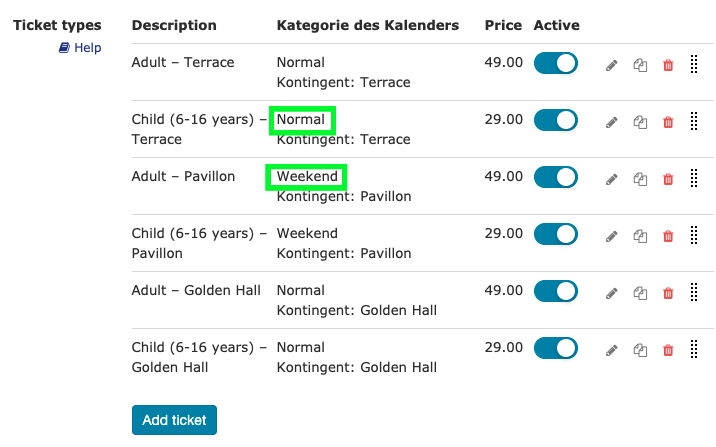Admission with calendar – set up allotments
In this article you will find out how to set up multiple allotments per slot.
In this article
Ticket sales example
Multiple allotments per slot function with full-day and time slots. This example is based on an all-day slot.
With this feature, your can specify multiple allotments per slot. In this example, tickets are being sold for a daily breakfast buffet. The guests can choose which room they would like to have breakfast in: Terrace, Pavilion, and Golden Hall. All three rooms have different numbers of seats. One allotment is recorded for each room.
Online shop

On-site sales
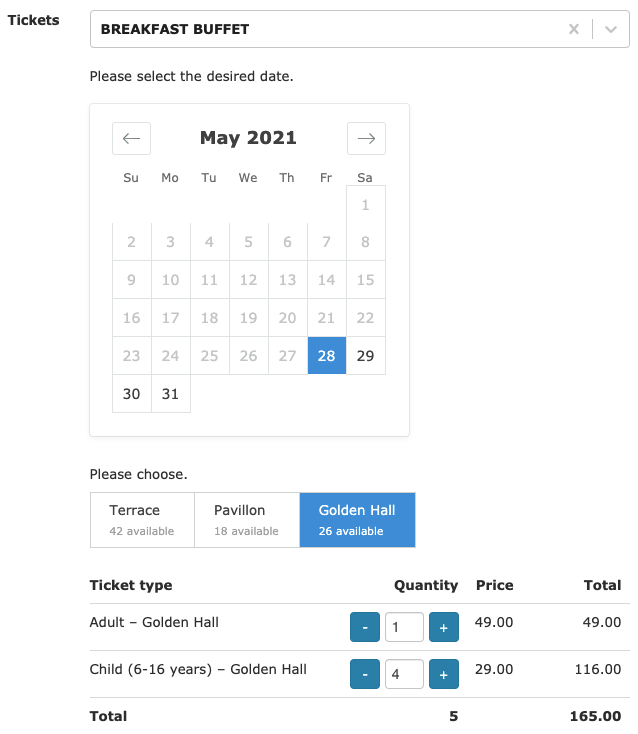
Setting up allotments
In the menu of your ticket system, click on Admissions -> Edit. Create a new Admission with calendar or select the existing admission that you want to edit. Scroll down to the Calendar field and click on Edit calendar. In the calendar view for the admission, click on the blue Contingents button to the top right.
In the calendar view for the admission, click on the blue Contingents button to the top right.
A dialogue now opens in which the allotments can be added, edited, or deleted.When creating a new calendar, a default allotment is created. To set up an additional allotment, click on the blue New contingent button. You can now edit the name of the default allotment, and add as many new allotments as you like.

Adding slots
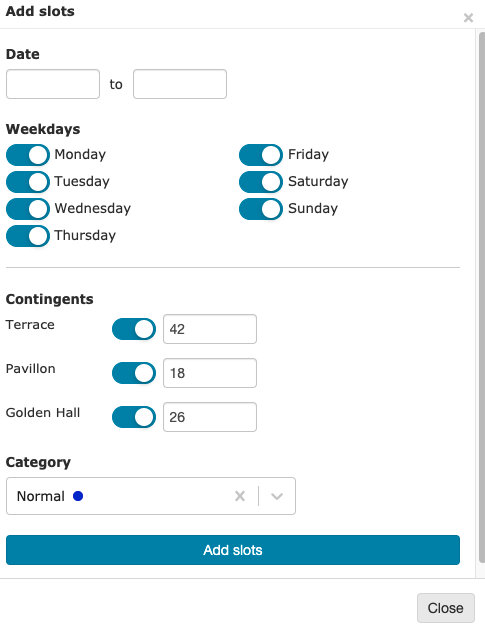
Editing slots
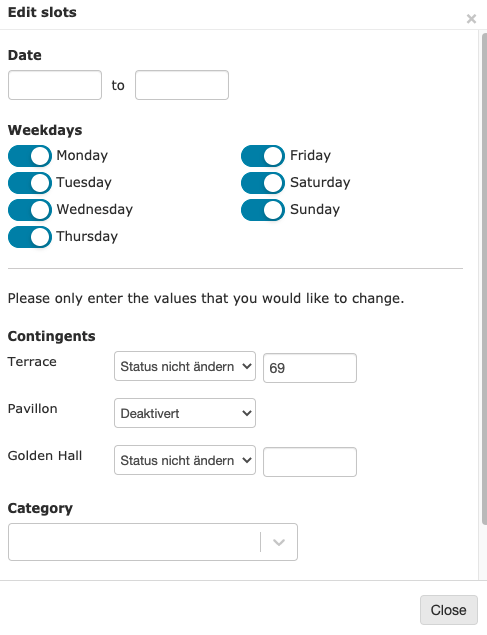
Ticket types
It is important that the name of the allotment is contained in the name of the ticket type, e.g. "Adult – Terrace". The name of the allotment is not automatically printed on the ticket.
At least one ticket type is required for each new allotment. Of course, multiple ticket types can also be specified, e.g. "Adult – Terrace" and "Children – Terrace".
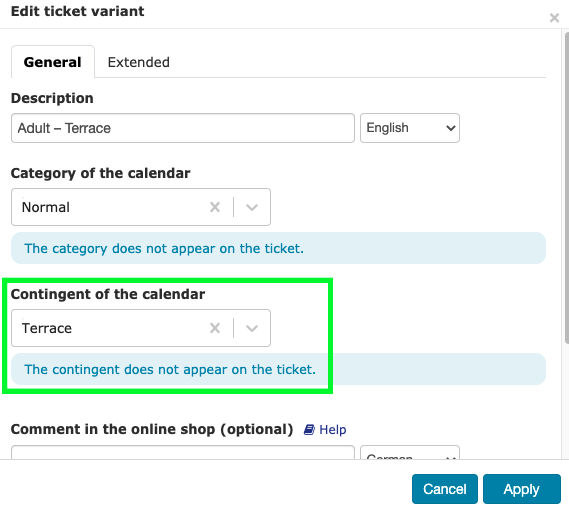
To check if the allotments are correctly assigned, the name of the allotment is also displayed in the list of ticket types.

Maximum number of orders per contingent
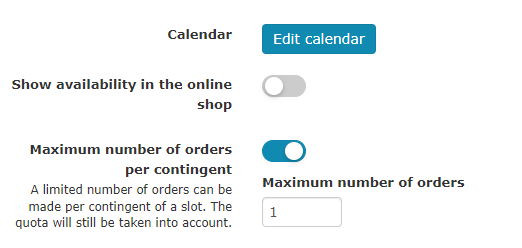
Combination with categories
